Pho is easily one of my all-time favorite soups, right alongside Thai boat noodles and tom yum. This homemade beef pho recipe brings the rich, savory flavors of beef broth and tender noodles straight to your table!
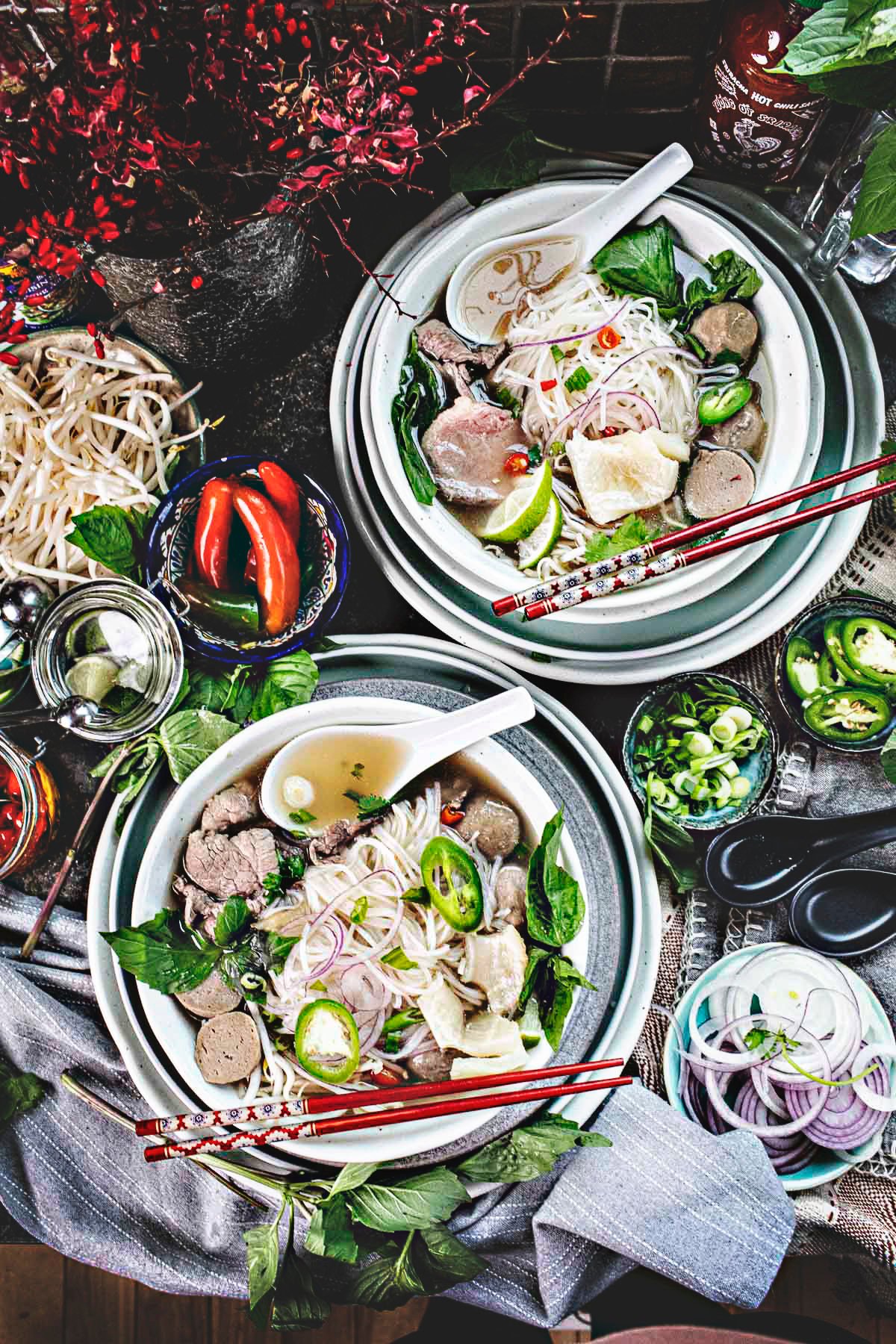
My love for pho runs deep, partly inspired by my late Vietnamese brother, who loved it even more than I do. After years of perfecting it—whether homemade, restaurant-served, or street-side in Vietnam—I'm excited to share this detailed, authentic pho recipe with you. Let’s dive into the world of fragrant broth, tender meat, and fresh herbs.
Pair your Pho with Vietnamese spring rolls or Thai egg rolls. Craving more soups? Try Thai boat noodles soup, Tom Yum noodle soup, Yen Ta Fo, glass noodle soup, or pork wonton soup!
Jump to:
What is Pho?
Pho is a classic Vietnamese food, a noodle soup with a savory, clear broth often made with beef bones (pho bo) or chicken (chicken pho). It’s a cozy blend of flavors, with garnishes like lime wedges, fresh herbs, and thin slices of beef or chicken. Each bowl offers a burst of umami, and it's customizable to your taste with sauces, veggies, or spice.
The heart of pho lies in its simmering broth, a mix of toasted spices like cinnamon stick, star anise, and cardamom, paired with roasted bones and aromatics like charred onion and ginger. While traditional pho requires hours of simmering for the ultimate depth, modern methods like the slow cooker or instant pot allow for quicker versions without losing much flavor.
Why You'll Love This Pho Recipe
- Healthy and Nourishing: Packed with nutrients from beef bones, it’s the ultimate comfort food.
- Customizable for Everyone: Adjust the toppings, spice level, and garnishes for a perfect fit.
- Make Ahead: Freeze the broth for future use—perfect for quick weeknight dinners.
Ingredients for Beef Pho
Pho has two key components: the flavorful broth and the bowl filled with noodles and garnishes. Some garnishes are optional, but for an authentic Vietnamese beef noodle soup, certain ingredients are a must. The best part? Once you’ve made pho soup the first time, you’ll have leftover spices ready for your next batch of phở bò.
See the recipe card below for measurements.
For the Broth:
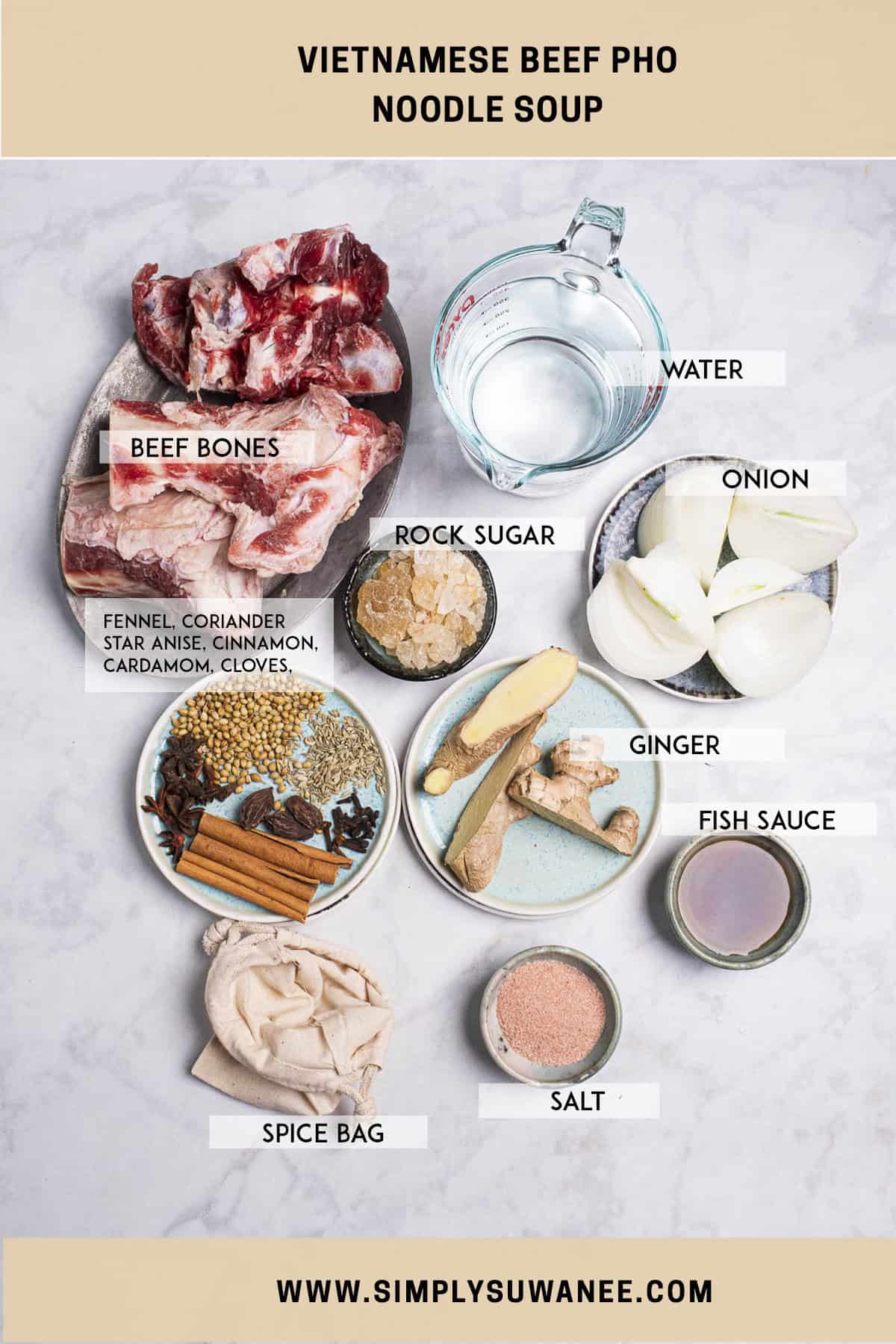
- Beef bones: Use knuckle bones, neck bones, or beef ribs for a rich, flavorful broth. I avoid bone marrow for my pho as it can make the broth too oily.
- Onions: Sweet or white onions, cut into large chunks, add natural sweetness.
- Fresh ginger: Smash with the back of a knife to release oils for a more fragrant broth.
- Saigon cinnamon sticks: Whole sticks add warmth. Substitute with Ceylon or Cassia cinnamon if needed.
- Whole star anise: Provides a distinct licorice-like flavor. Look for it in local Asian markets.
- Whole cloves: Strong and aromatic. Use whole cloves for maximum flavor.
- Brown cardamom: Lightly crush to expose seeds for a bold, earthy flavor.
- Coriander seeds: Add depth and complexity to the broth.
- Fennel seeds: Optional but enhances sweetness. Read more about Asian spices here.
- Salt: Use any type of salt to season the broth.
- Rock sugar: Use white or yellow rock sugar to Balance flavors with a touch of sweetness.
- Fish sauce: Add at the end to fine-tune the flavor of your pho broth.
For the Bowl and Garnishes
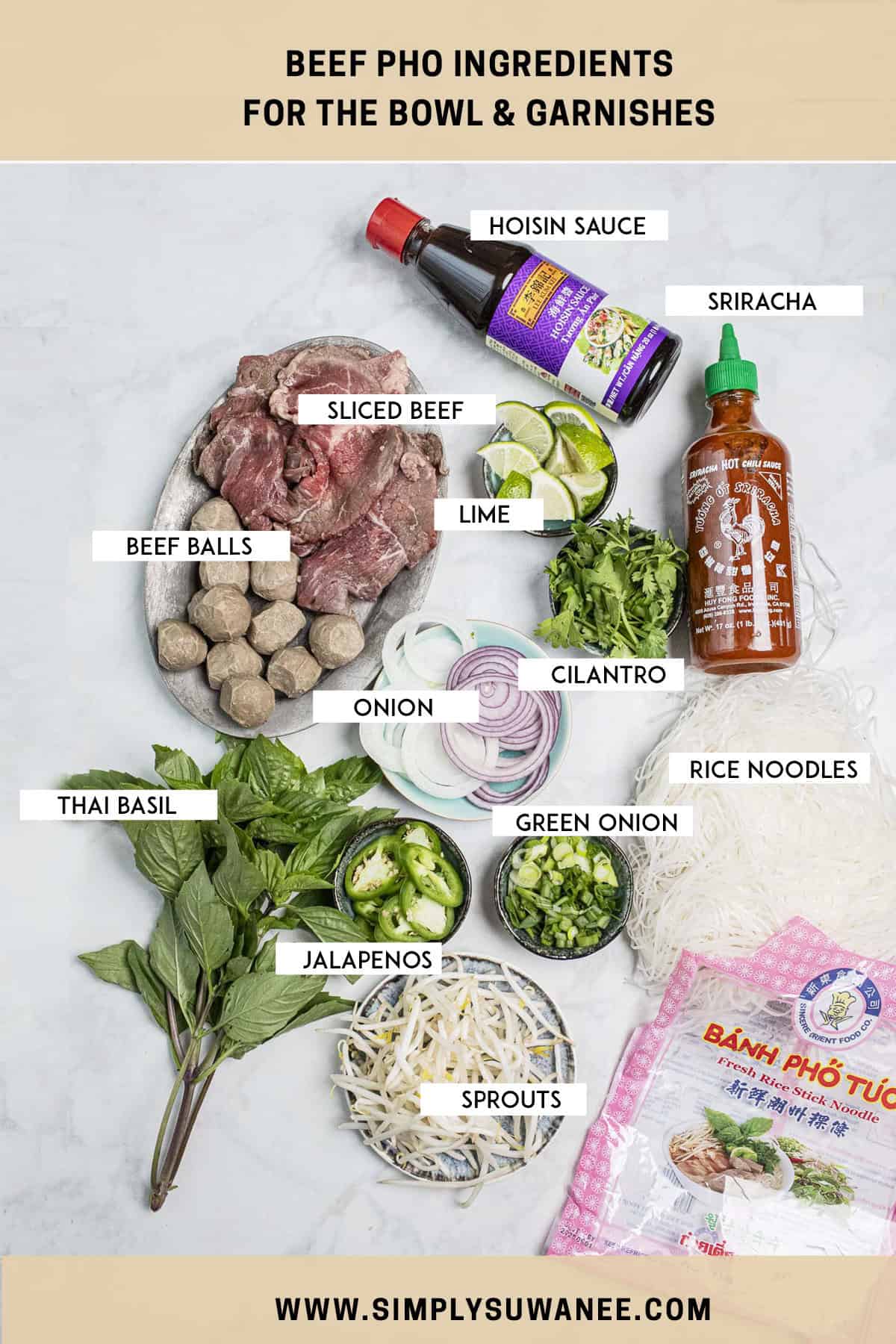
- Rice noodles: Fresh noodles are ideal, but dried noodles work too—follow package instructions. Read more about noodles here.
- Sliced beef: Use thin slices of beef tenderloin, brisket, or short ribs for the best cut.
- Beef meatballs: A great addition for texture and flavor.
- Bean sprouts: Adds crunch to your bowl of pho.
- Sliced onion: Purple, white, or sweet onions work well.
- Cilantro and green onion: Fresh garnishes for a burst of flavor.
- Thai basil and mint leaves: Essential for authentic pho.
- Hoisin and Sriracha sauce: Optional condiments to enhance the soup's flavors.
Unique Ingredients Worth Mentioning
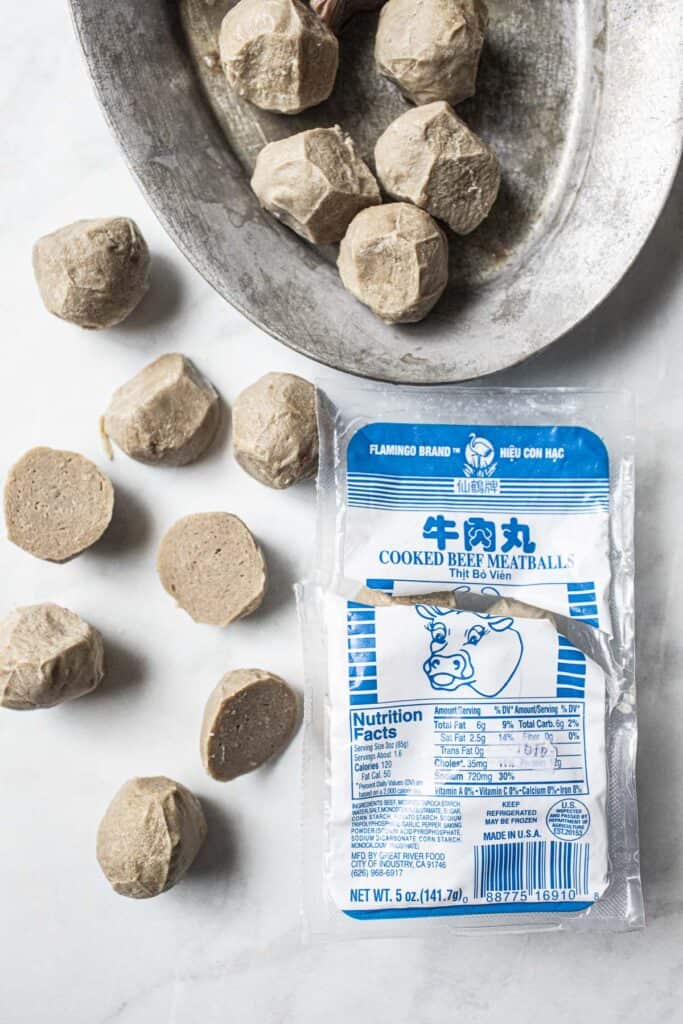
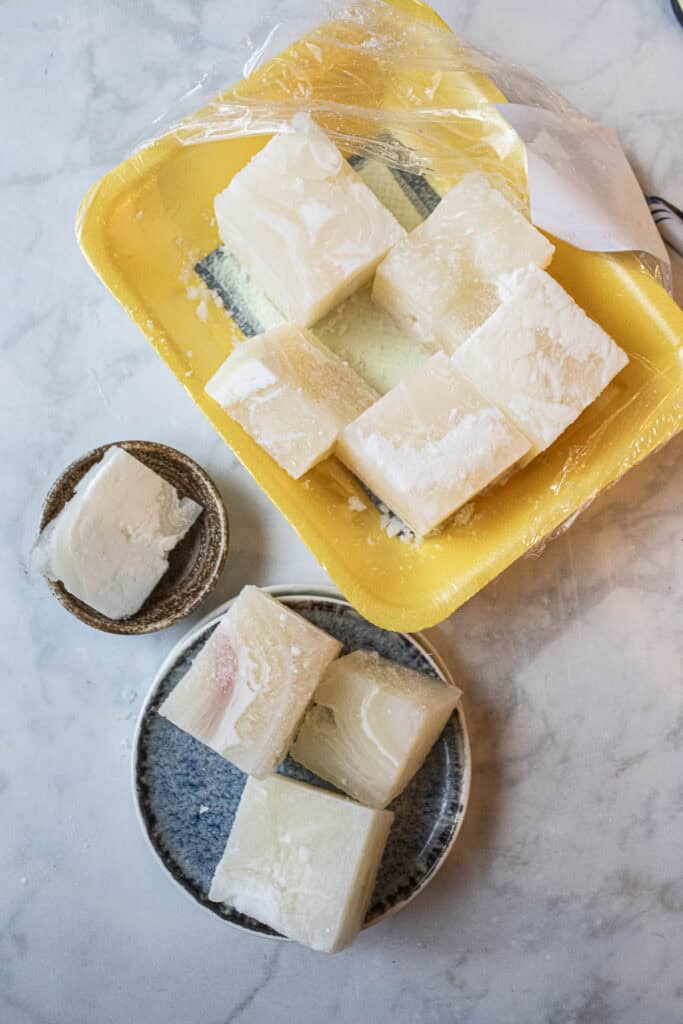
Two unique ingredients worth highlighting for my pho soup are beef meatballs and tripe. These are optional, but add extra protein, collagen, and depth of flavor to your soup. Both can be found in the frozen section at Asian markets, and the meatballs are typically pre-cooked. You can opt for pork meatballs if you prefer. They bring a savory, umami punch that’s perfect for pho and dishes like my boat noodles soup. Want a homemade version? Try these!
As for tripe, it’s available at Asian markets and occasionally at select American grocery stores. Tripe adds a wonderful texture and flavor to the broth. Cut it into large chunks before cooking as it shrinks a bit. The texture is similar to braised pork skin, like in my Khao Kha Moo recipe. You can boil it separately in lightly salted water or add it directly to the pho broth an hour before it’s done cooking. Once tender, fish it out and serve it in your pho bowl for a delicious, authentic touch!
How to Make Beef Pho
1. Toast the Spices. In a dry pan over medium heat, toast the cinnamon sticks, star anise, and cardamom until fragrant. Add coriander, fennel, and cloves. Once the spices start popping, remove them from the heat, transfer them to a plate, and let them cool. To prevent burning, toast larger spices first before adding smaller seeds. Once cooled, place them in a spice sachet or wrap them in cheesecloth.
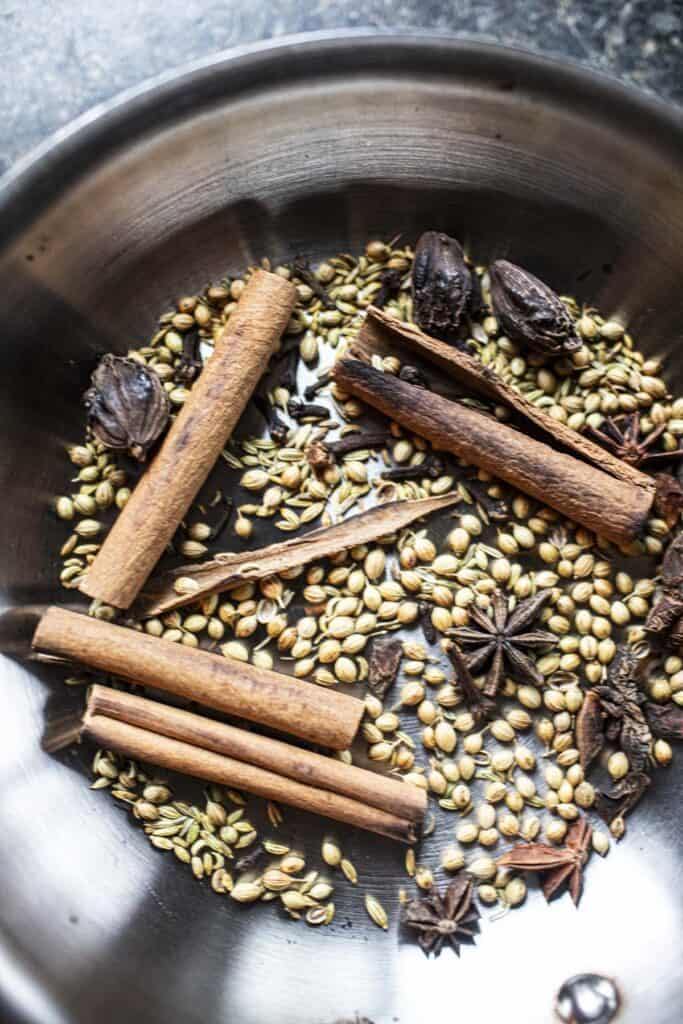
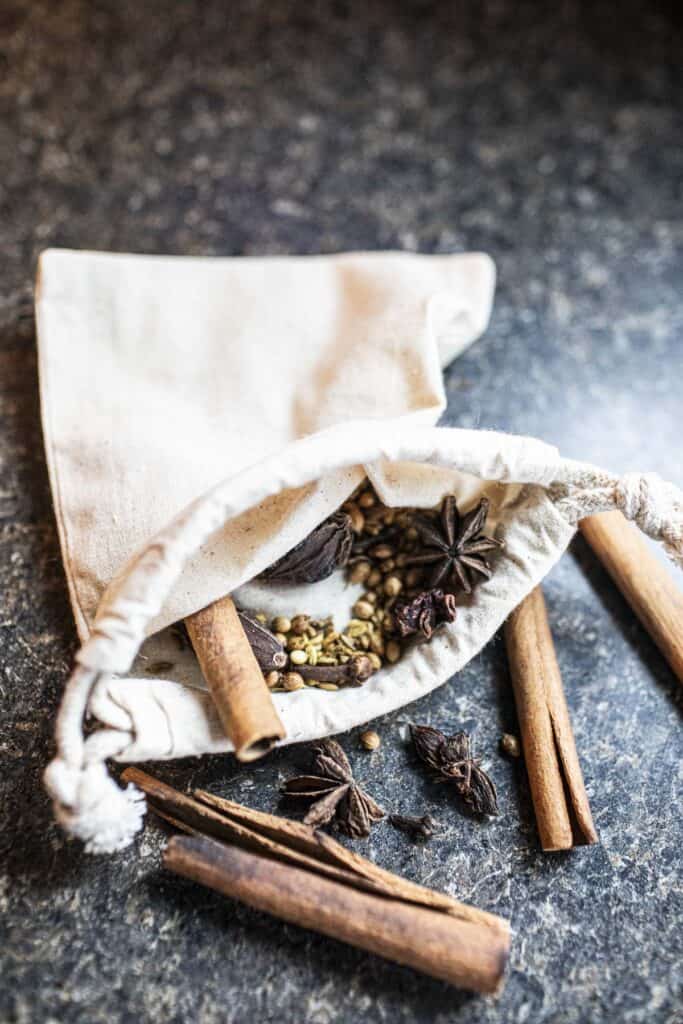
2. Char the Aromatics. In the same pan, toast sliced onion and ginger. Smash the ginger with the back of your knife to release its oils, enhancing the fragrance and flavor. Toast until lightly charred but not burnt.
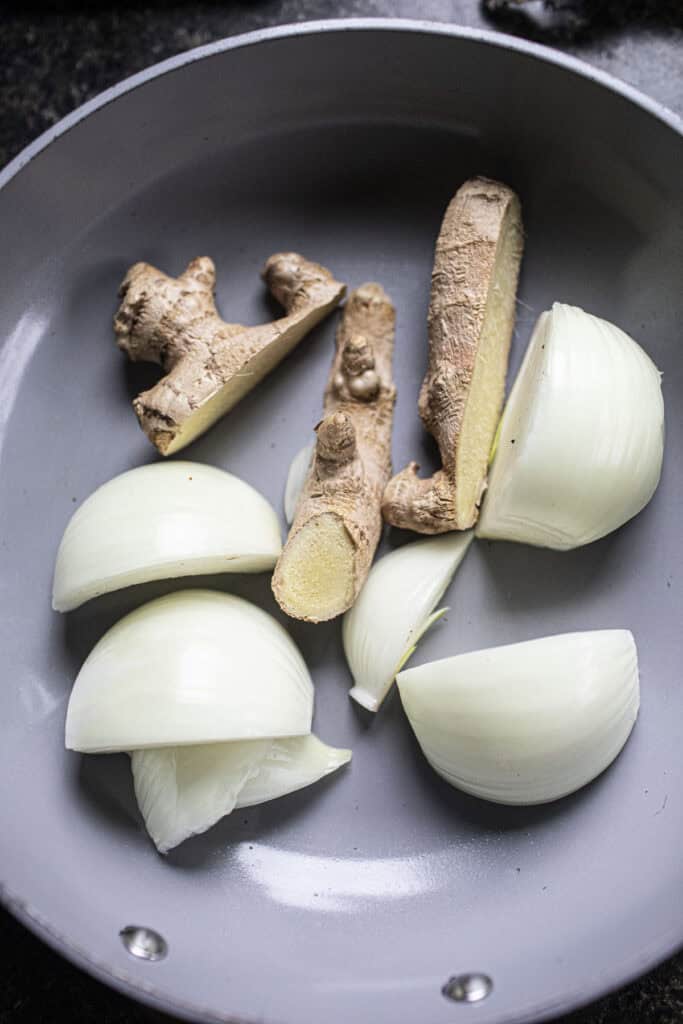
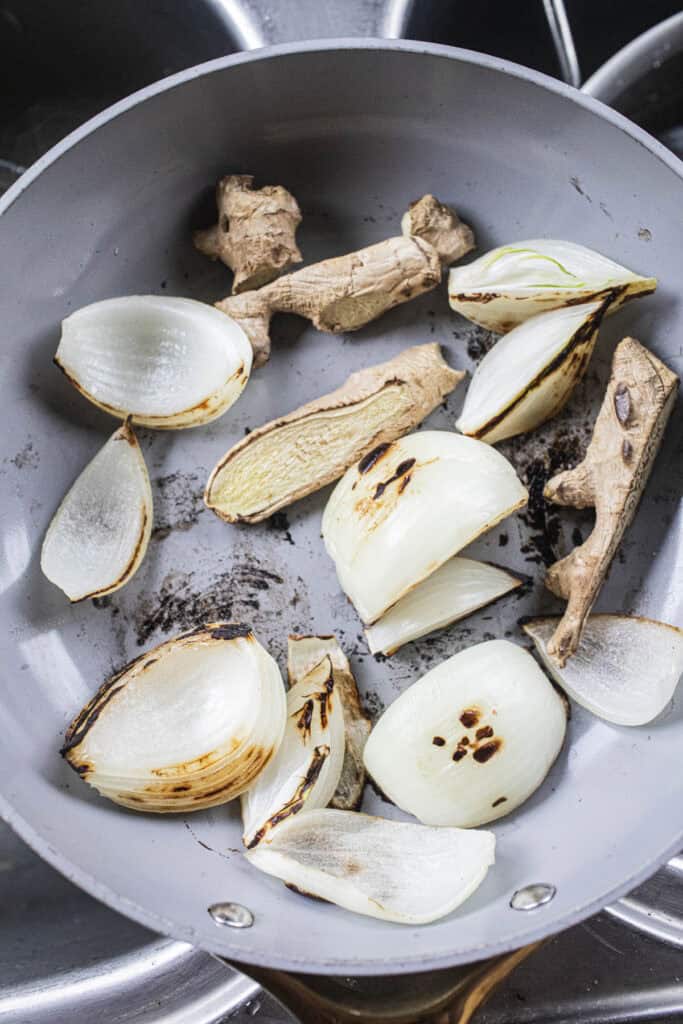
3. Parboil the Bones. Place beef bones, such as knuckle bones or neck bones, in a large pot. Cover with cold water, bring to a boil, then drain and rinse the bones. While some recipes discard the parboiling liquid for a clearer broth, I prefer to keep the nutrients and flavor. This approach results in a slightly darker but equally delicious broth.
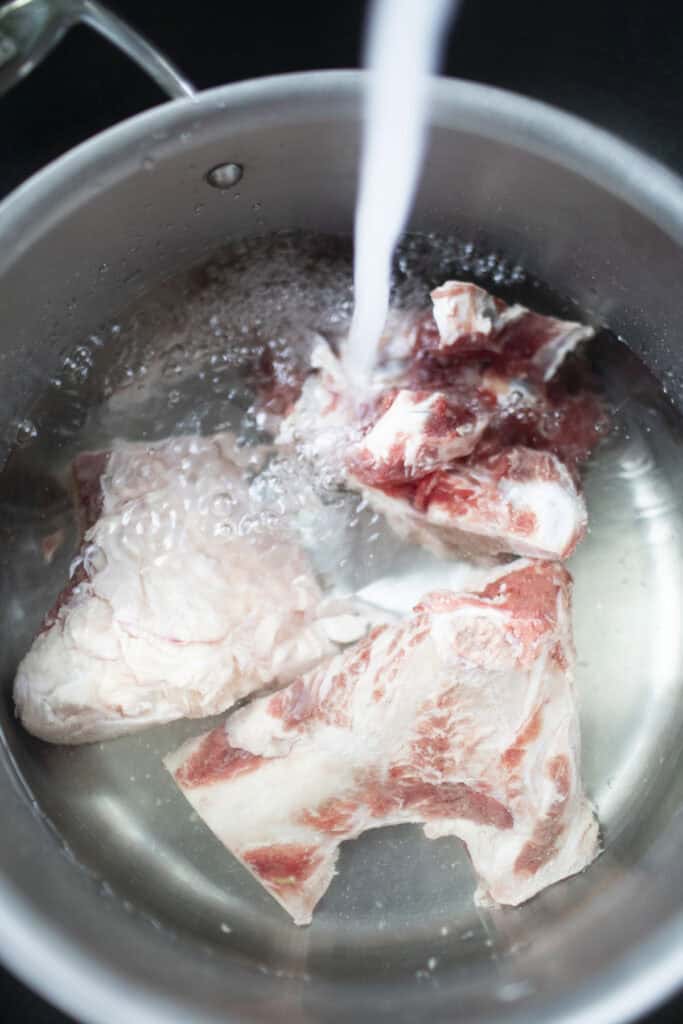

3. Simmer the Broth. In a large stock pot, combine the parboiled bones, toasted aromatics, spice sachet, salt, rock sugar, and enough hot water to cover. Bring to a boil, then lower the heat to a simmer. Skim off scum regularly and partially cover with a lid. Simmer for 2–4 hours, adding water as needed to maintain the liquid level. Adjust the seasoning with fish sauce toward the end.
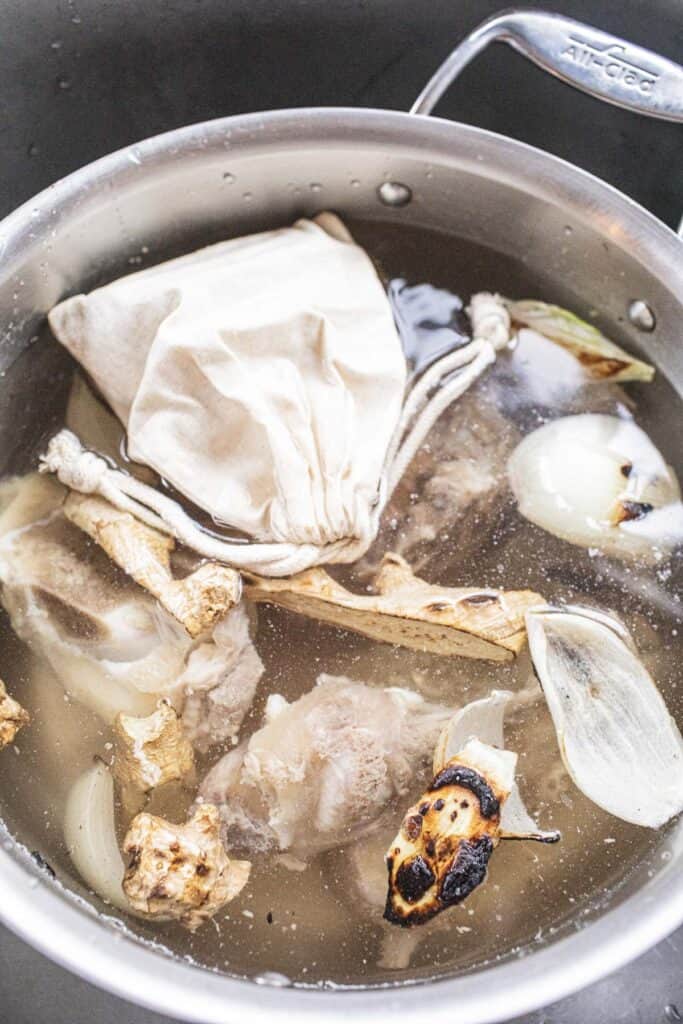
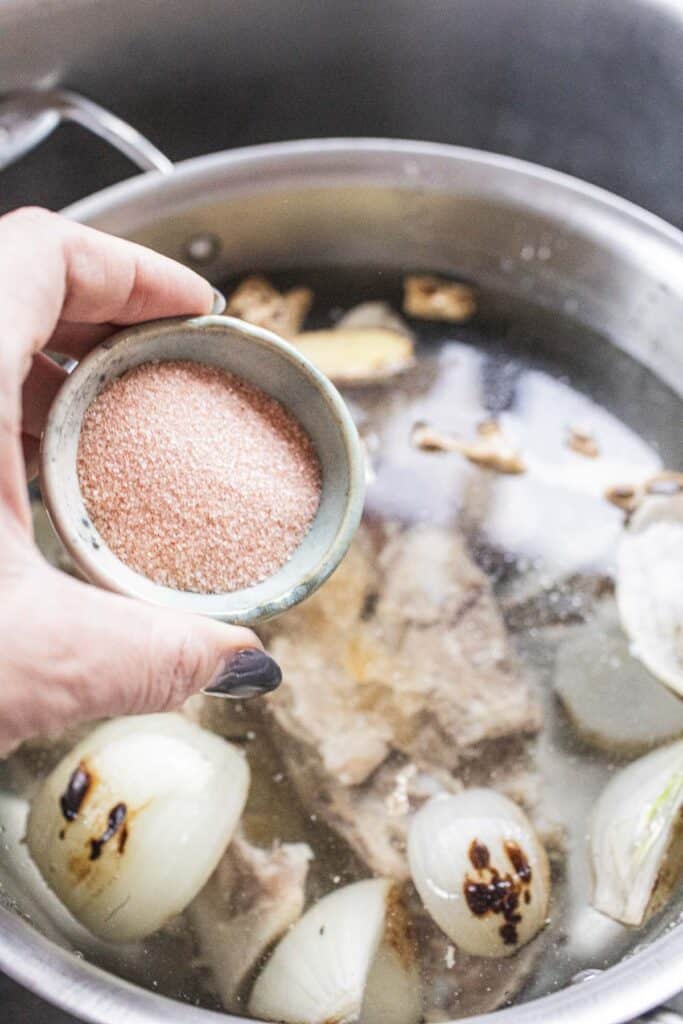
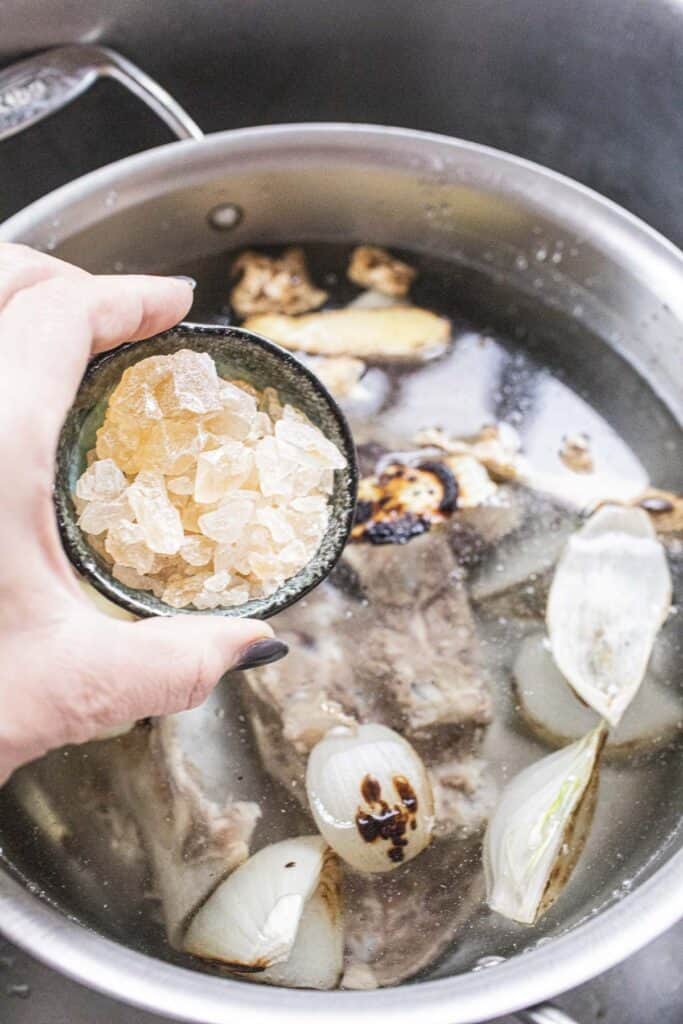

4. Prepare Bowl Ingredients. While the broth simmers, prepare your garnishes. Soak rice noodles in warm water if using dried noodles. Slice the beef into thin pieces, halve the beef meatballs, and chop fresh herbs like cilantro and green onion. Rinse bean sprouts, and prepare Thai basil, mint leaves, lime wedges, and sliced jalapeños or serranos for added heat. These fresh garnishes will elevate your bowl of pho.
5. Assemble the Pho Bowls. Before serving, blanch rice noodles in a separate pot of boiling water to prevent starch from clouding the broth. Use a wire mesh basket to dunk the noodles, then transfer them to individual serving bowls. Dunk sliced beef, beef meatballs, and bean sprouts directly into the simmering broth for a quick cook before adding them to the bowls.
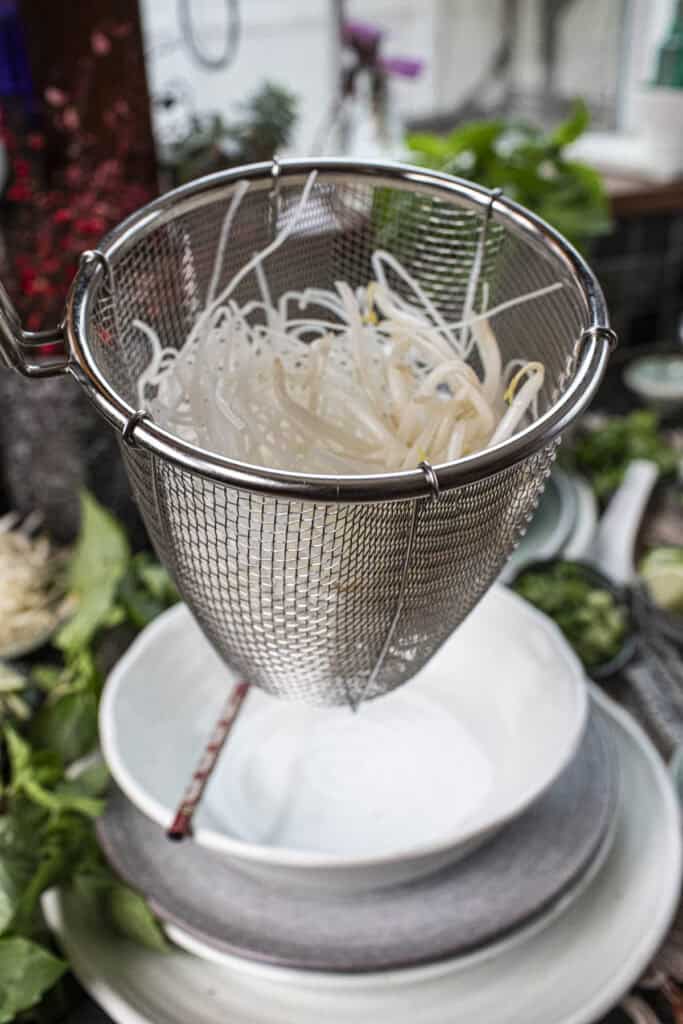
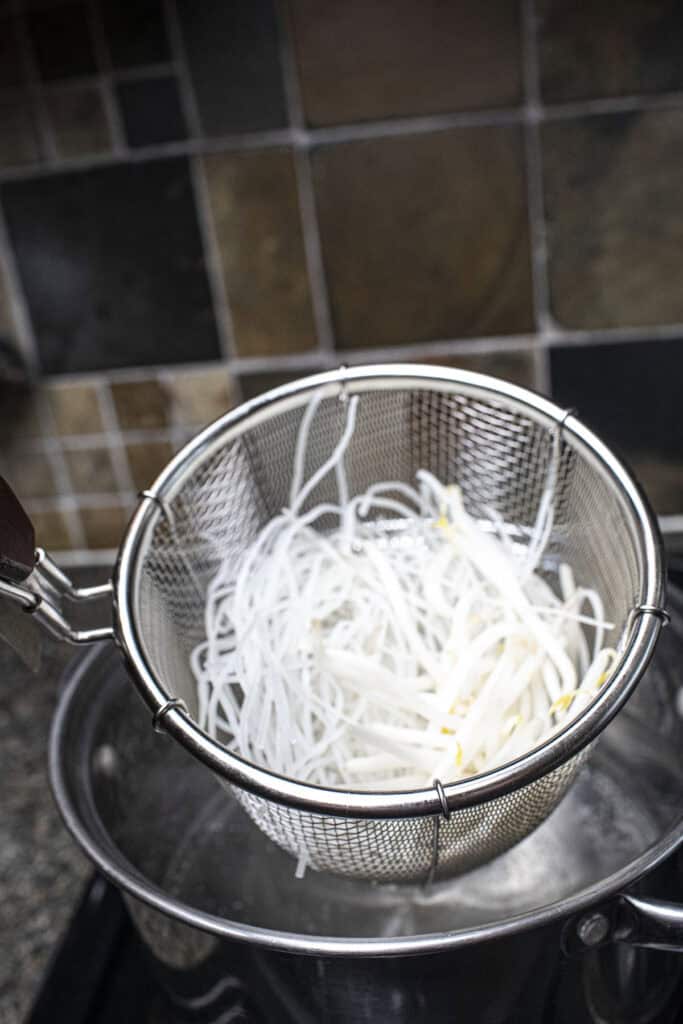
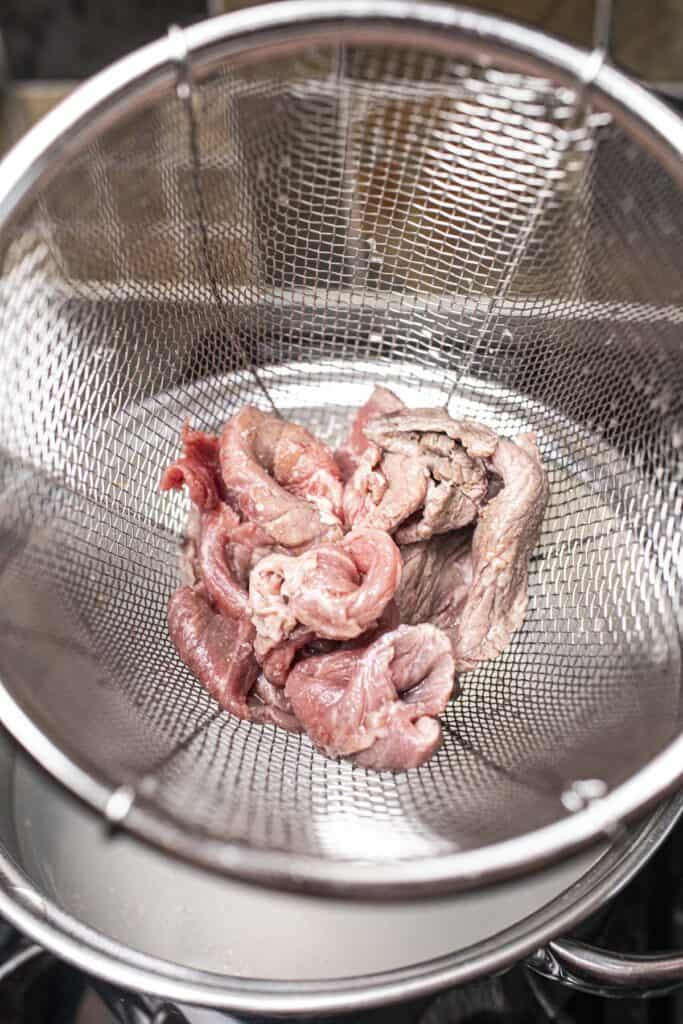
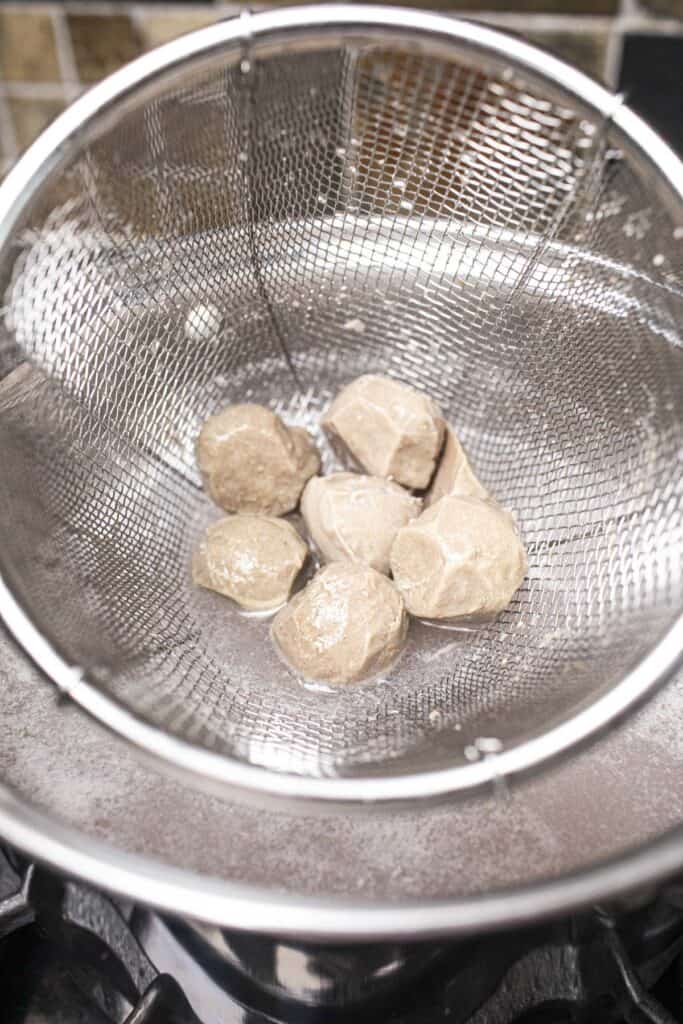
6. Ladle and Garnish. Ladle piping hot broth over the assembled ingredients in your serving bowls. Top with thinly sliced onion, cilantro, green onion, Thai basil, mint leaves, and lime wedges. For extra flavor, add Sriracha or Hoisin sauce sparingly—though this rich, herbaceous broth rarely needs it.
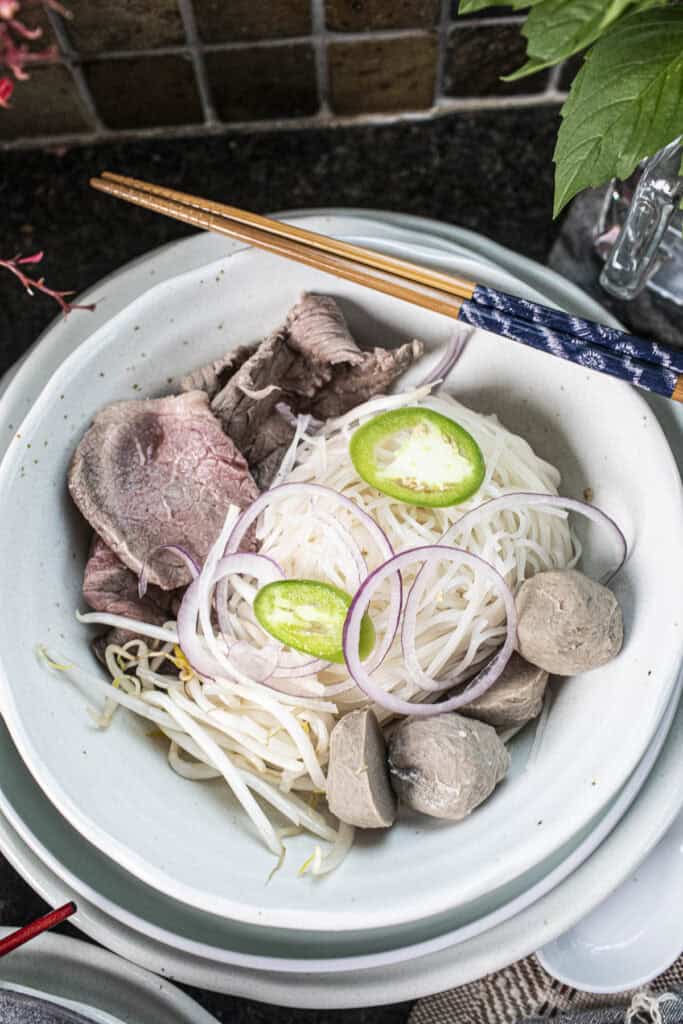
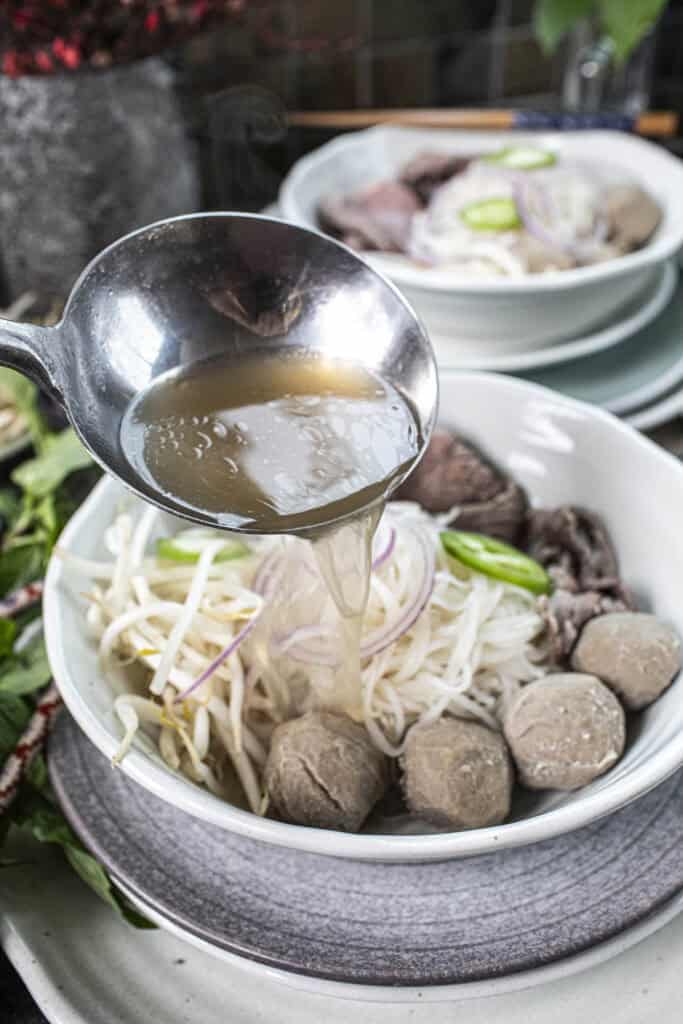
7. Serve and Enjoy. Enjoy your homemade pho while it's steaming hot. This recipe delivers an authentic Vietnamese noodle soup with bold flavors and the perfect balance of savory and aromatic notes.
Helpful Kitchen Tips for Making Pho
- Char the aromatics. char the onion and ginger over an open flame gives them an even more intense flavor due to the close proximity to the heat. But be safe and use a pan if you don't feel comfortable doing it. Using a grill is also an option to keep in mind too.
- Use High-Quality Bones: Opt for meaty bones like knuckle or shank for the best flavor.
- Balance the Flavors: Adjust fish sauce, sugar, and lime juice to your liking before serving.
- Keep the Broth Hot: Maintain a simmering broth for assembling pho noodle soup so the raw beef slices cook perfectly.
- Strain Well: Use a fine mesh strainer to remove spices and bits for a cleaner broth.
Variations & Substitutes
- Quick pho: Use store-bought broth and beef shank for a faster version.
- Chicken pho: Replace beef bones with chicken carcasses for a lighter flavor.
- Vegetarian pho: Substitute with vegetable broth and tofu.
Storing Leftovers
- Allow the broth to cool to room temperature before storing it in an airtight container in the fridge for up to 3 days or freeze for up to 3 months.
- Store the broth, noodles, meat, and garnishes separately to avoid sogginess.
- Reheat noodles separately to avoid sogginess.
Helpful Kitchen Tools for Making Pho
- Large stockpot
- Wire mesh basket for dunken the ingredients in the broth
- fine-mesh strainer for scopping out scum from the broth.
- Use a spice bag to hold your dry roasted spices.
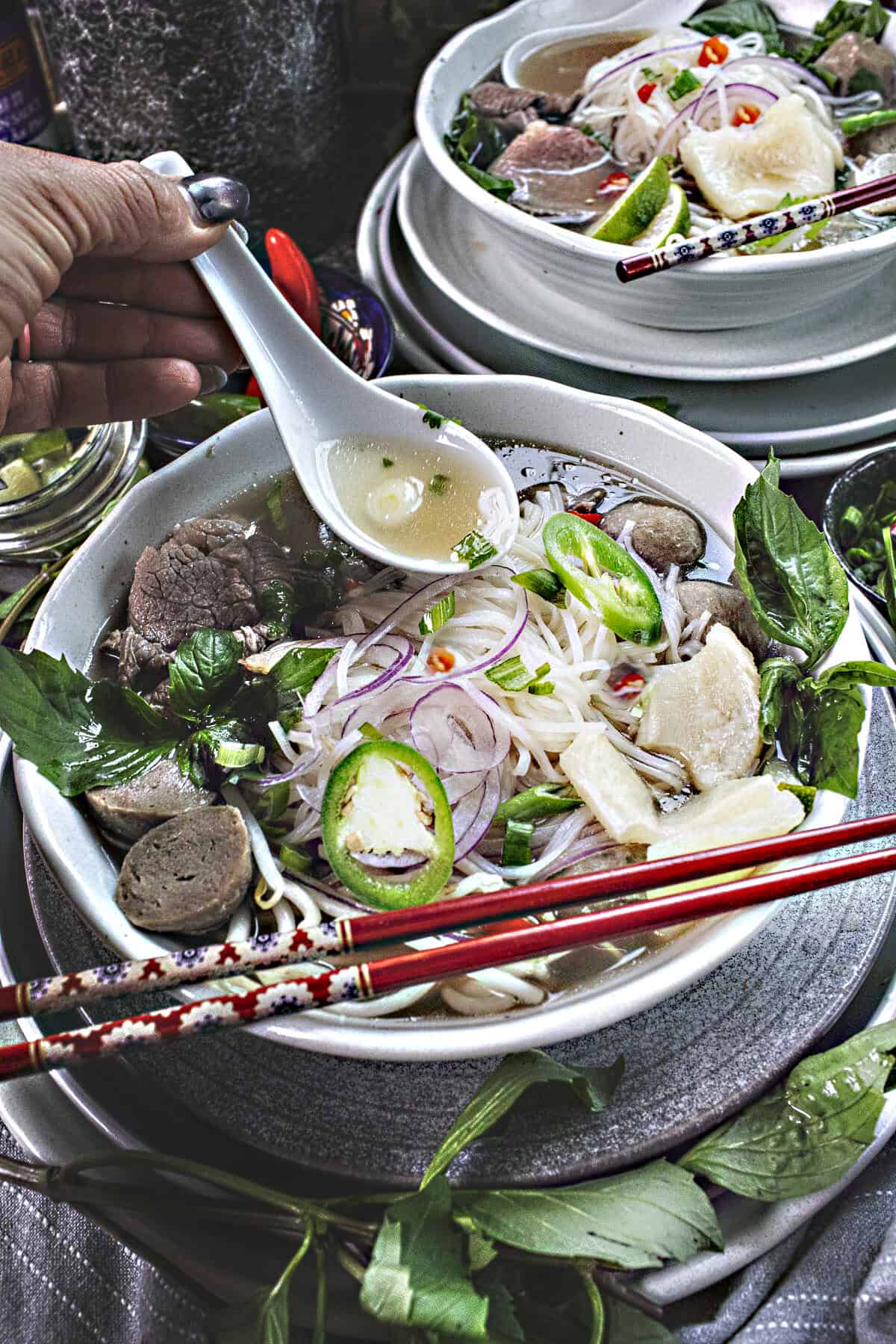
More Tasty Soups You’ll Love
- Instant Pot Tom Yum Soup
- Thai Yellow Curry with Kabocha Squash
- Homemade Beef Broth
- Slow cooker beef bone broth
Love this recipe? Please leave a 5-star rating below and share it with your friends. Follow me on Facebook, Pinterest, or Instagram for more great recipes!
Print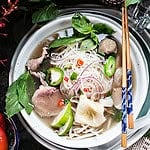
Pho Beef Noodle Soup
- Total Time: 2-3 hours
- Yield: 8
- Diet: Gluten Free
Description
Pho is hands down one of my all-time favorite soups, right up there with Thai boat noodles and tom yum soup. This homemade pho beef noodle soup recipe brings the rich, savory taste of Vietnamese beef pho and tender Vietnamese beef noodles straight to your table!
Ingredients
For the broth:
- 2 pounds beef bones: Use knuckle bones, neck bones, or beef ribs for a rich, flavorful broth. I avoid bone marrow for my pho as it can make the broth too oily.
- 3 ounces rock sugar
- 1 ½ tablespoons salt
- 6 ounces onions, one medium-sized, sliced into quarters. Use sweet or white onions
- 1.5 ounces fresh ginger, cut into 4-inch pieces, sliced in halves, and smashed with the back of a knife to release oils for a more fragrant broth.
- Saigon cinnamon sticks. Substitute with Ceylon or Cassia cinnamon if needed.
- 4 whole star anise
- 2 black cardamom. Leave whole, don't smash, or the flavors from the seeds will be too strong
- 5 whole cloves
- 1 tablespoon coriander seeds
- ½ tablespoon fennel seeds
- Fish sauce: Add at the end to fine-tune the flavor of your pho broth.
For the bowl and garnishes:
Portion these as needed for your serving bowls.
- 1 packet rice noodles. Follow package instructions
- ½ pound thinly sliced beef. Use thin slices of beef tenderloin, brisket, or short ribs for the best cut.
- 1 packet of beef meatballs, sliced in halves or left whole for serving.
- 2 cups bean sprouts
- ½ cup sliced onion. Purple, white, or sweet onions work well.
- ½ cup cilantro and green onion, chopped into small pieces
- 1 ½ cups Thai basil and mint leaves. Use as needed
- ½ - 1 tablespoon Hoisin and Sriracha sauce. Optional condiments to enhance the soup's flavors.
Instructions
- Toast the Spices. In a dry pan over medium heat, toast the cinnamon sticks, star anise, and cardamom until fragrant. Add coriander, fennel, and cloves. Once the spices start popping, remove them from the heat, transfer them to a plate, and let them cool. To prevent burning, toast larger spices first before adding smaller seeds. Once cooled, place them in a spice sachet or wrap them in cheesecloth.
- Char the Aromatics. In the same pan, toast sliced onion and ginger. Smash the ginger with the back of your knife to release its oils, enhancing the fragrance and flavor. Toast until lightly charred but not burnt.
- Parboil the Bones. Place beef bones, such as knuckle bones or neck bones, in a large pot. Cover with cold water, bring to a boil, then drain and rinse the bones. While some recipes discard the parboiling liquid for a clearer broth, I prefer to keep the nutrients and flavor. This approach results in a slightly darker but equally delicious broth.
- Simmer the Broth. In a large stock pot, combine the parboiled bones, toasted aromatics, spice sachet, salt, rock sugar, and enough hot water to cover. Bring to a boil, then lower the heat to a simmer. Skim off scum regularly and partially cover with a lid. Simmer for 2–4 hours, adding water as needed to maintain the liquid level. Adjust the seasoning with fish sauce toward the end.
- Prepare Bowl Ingredients. While the broth simmers, prepare your garnishes. Soak rice noodles in warm water if using dried noodles. Slice the beef into thin pieces, halve the beef meatballs, and chop fresh herbs like cilantro and green onion. Rinse bean sprouts, and prepare Thai basil, mint leaves, lime wedges, and sliced jalapeños or serranos for added heat. These fresh garnishes will elevate your bowl of pho.
- Assemble the Pho Bowls. Before serving, blanch rice noodles in a separate pot of boiling water to prevent starch from clouding the broth. Use a wire mesh basket to dunk the noodles, then transfer them to individual serving bowls. Dunk sliced beef, beef meatballs, and bean sprouts directly into the simmering broth for a quick cook before adding them to the bowls.
- Ladle and Garnish. Ladle piping hot broth over the assembled ingredients in your serving bowls. Top with thinly sliced onion, cilantro, green onion, Thai basil, mint leaves, and lime wedges. For extra flavor, add Sriracha or Hoisin sauce sparingly—though this rich, herbaceous broth rarely needs it.
- Serve and Enjoy. Enjoy your homemade pho while it's steaming hot. This recipe delivers an authentic Vietnamese noodle soup with bold flavors and the perfect balance of savory and aromatic notes.
Notes
- Char the aromatics. Charring the onion and ginger over an open flame gives them an even more intense flavor due to the close proximity to the heat. But be safe and use a pan if you don't feel comfortable doing it. Using a grill is also an option to keep in mind.
- Use High-Quality Bones: Opt for meaty bones like knuckle or shank for the best flavor.
- Balance the Flavors: Adjust fish sauce, sugar, and lime juice to your liking before serving.
- Keep the Broth Hot: Maintain a simmering broth for assembling pho noodle soup so the raw beef slices cook perfectly.
- Strain Well: Use a fine mesh strainer to remove spices and bits for a cleaner broth.
- Prep Time: 15
- Cook Time: 2 hours
- Category: soups
- Method: stovetop
- Cuisine: Vietnamese
Visit the search results to see which questions come up under the People also ask section for your primary keyword, and answer them here
Related
Looking for other recipes like this? Try these:

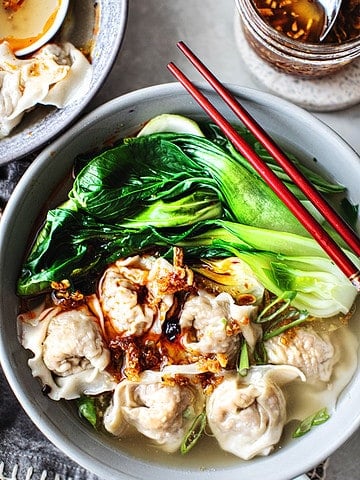
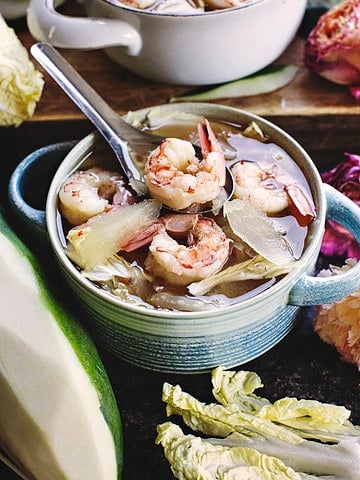
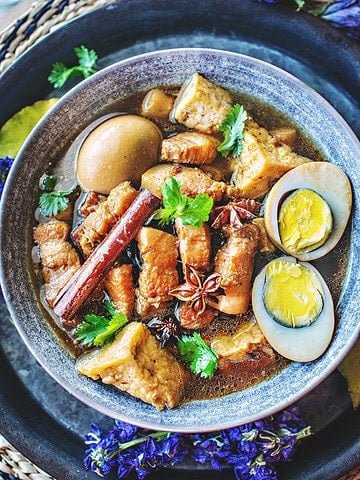
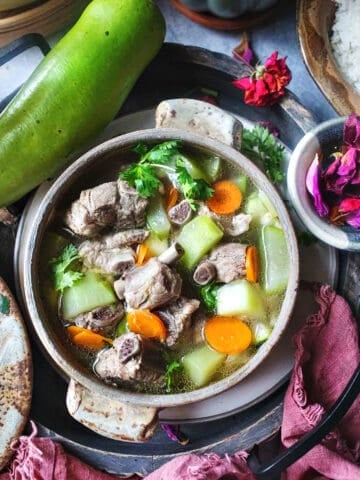
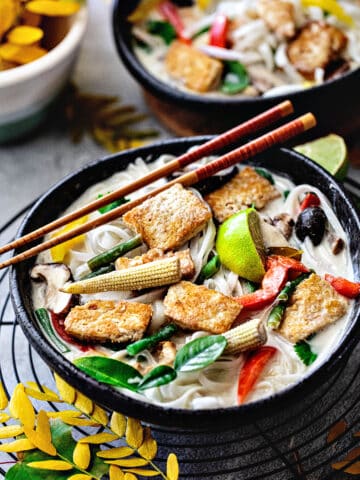
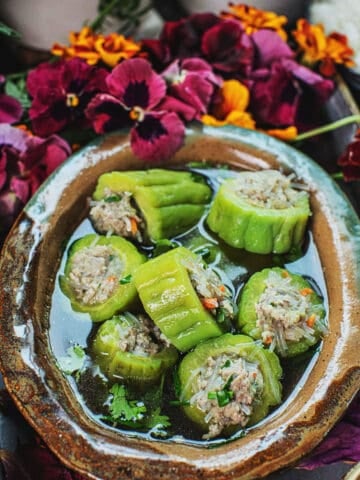
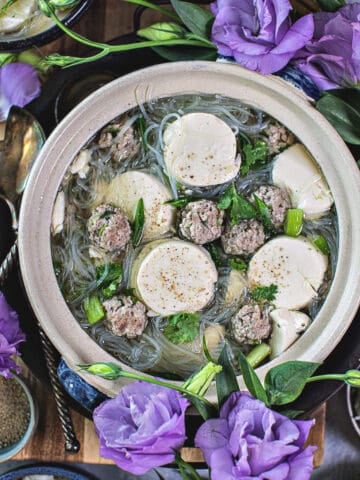
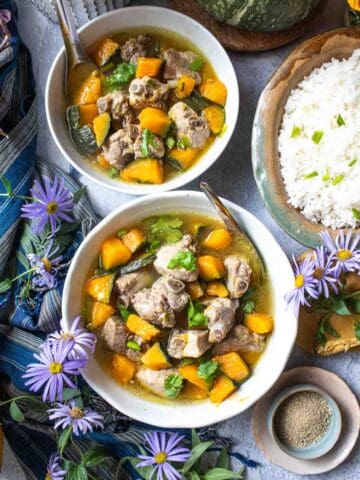
Mark says
Phantastic! I wanna slurp this everyday. I love bowl season!